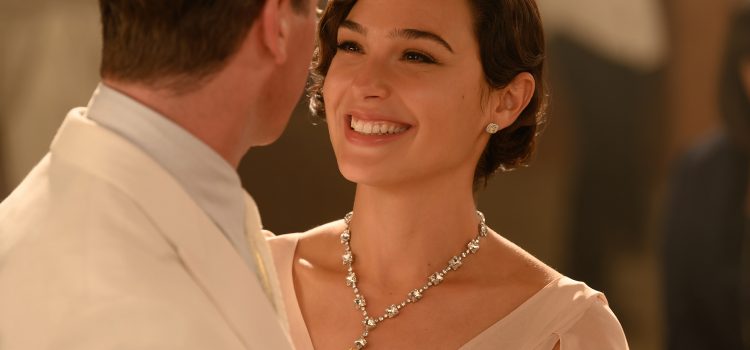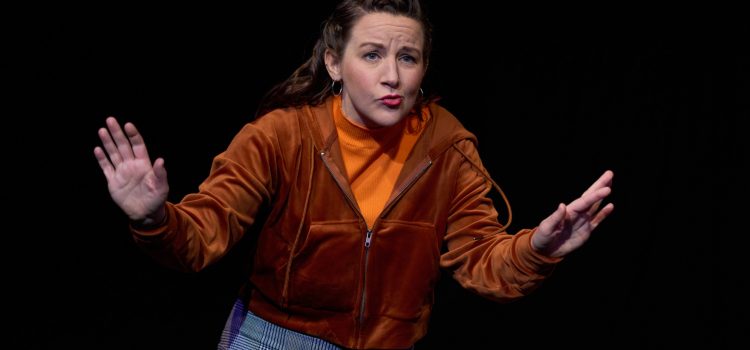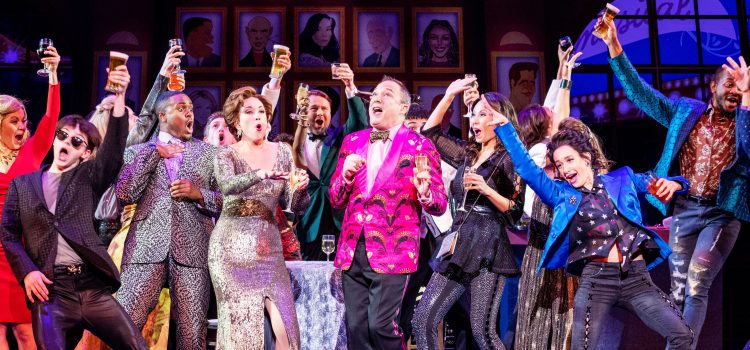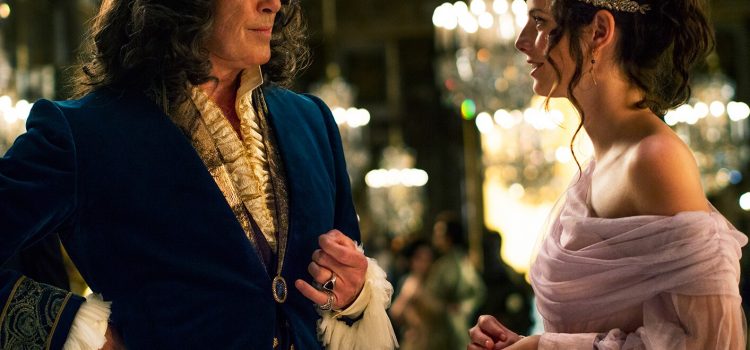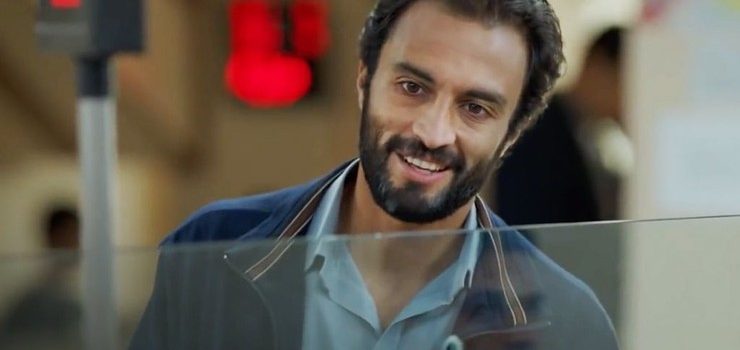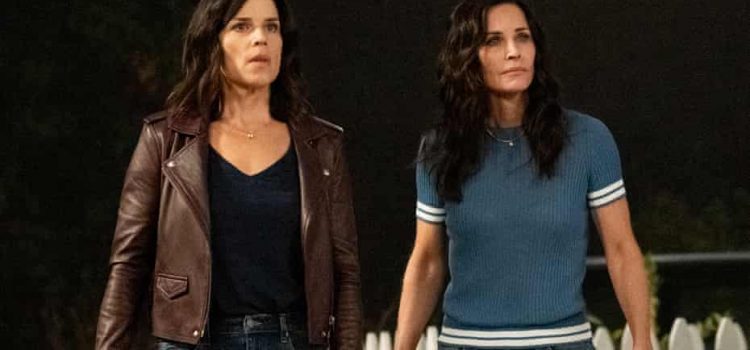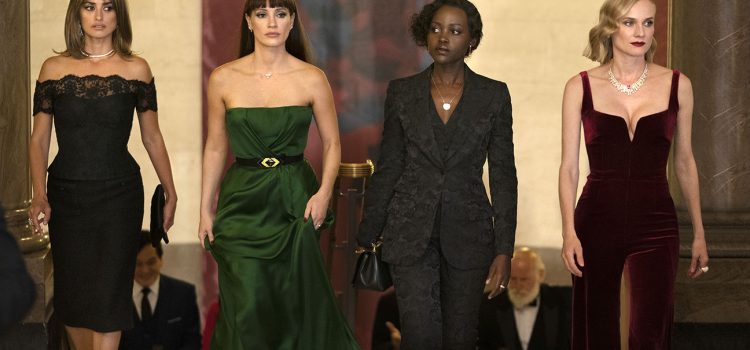By Lynn Venhaus
A luxurious old-fashioned whodunit, “Death on the Nile” blends the escapism of an exotic locale with a clever yarn about obsessive love and betrayal.
For 2 hours and 7 minutes, it’s a lovely time at the movies to forget a dreary winter or live vicariously through super-rich elitists while one of Agatha Christie’s most intricate murder mysteries unfolds in opulent surroundings.
A beautiful newlywed heiress is murdered during a wedding party cruise down the Nile, and Belgian detective Hercule Poirot attempts to solve the puzzle, meanwhile others are killed and the invited guests all become suspects.
The legendary British author was the master of constructing crimes in confined spaces, and director Kenneth Branagh effectively contrasts a jolly holiday setting with suspicions about the ambitious and greedy passengers on board the paddleboat steamer Karnak. Who could be capable of murder?
This version was easy to be swept away by, with stunning vistas of the Egyptian landscape, including the majestic pyramids at Giza and the grandeur of the pharaohs. It might be CGI, but the striking imagery evoked awe and wonder.

The atmospheric elements are first-rate. Cinematographer Haris Zambarloukos has worked with Branagh on multiple films and gives the panoramas a golden hue and sumptuous feel.
So has composer Patrick Doyle, who captures both the times and the looming danger in a jazzy blues-tinged score.
Editor Úna Ní Dhonghaíle, who did such excellent work on “Belfast,” is sharp doling out the clues and crime snippets.
Paco Delgado’s splendid costume design includes crisp summer whites and glamorous period evening wear, with classy dressing for dinner de rigueur in the swanky environment.
Jim Clay’s posh production design is a treasure trove of elegance, with a keen eye on the desert climate and fancy vintage interiors.
The invited guests, of course, either have secrets or motives, and screenwriter Michael Green capitalizes on the connections. He collaborated with Branagh on their first Christie foray, “Murder on the Orient Express,” in 2017, but this film is put together with more elan.
Green has cut some characters, changed professions for several, and created a few different backstories than in Christie’s original 1937 novel. Salome Otterbourne is now a sophisticated blues nightclub singer rather than a romance novelist, and instead of imitating Angela Lansbury 34 years ago, Oscar-nominee Sophie Okonedo infuses her role with sass and a world-weary attitude.
The filmmakers hint at an attraction between her and the fussbudget Poirot, and as played again by Branagh as all-business, they give him a tragic World War I romance and a mustache origin story that opens the film.
The casting choices are interesting, led by the dazzling Gal Gadot, who veered from playing a superhero to again demonstrate her formidable screen presence. She is breath-taking as the pressured heiress who marries her bestie’s fiancé in a whirlwind romance.
Emma Mackey, a regular on the Netflix series “Sex Education,” is a striking friend-turned-foe Jacqueline de Bellafort, whose bitterness and resentment dampens the festive atmosphere.
A surprising Russell Brand stays in the drama lane as Linnet’s former fiancé, a dull but accomplished doctor.
And check this out — the “Absolutely Fabulous” creators, the pair of comedians Jennifer Saunders and Dawn French, play the haughty godmother and her constant companion, an outspoken communist.
Annette Bening is a cranky dowager who disapproves of her son, Bouc (Tom Bateman), and his romance with Rosalie (Letitia Wright).

Love is in the air in multiple story threads, but due to circumstances beyond their control, the main coupling is problematic.
The film was delayed several times, after originally planned for a 2019 release, but filming pushed it back to 2020, then the COVID-19 pandemic hit and the release date was moved several more times, with plans for a fall 2021 opening. Well, the Armie Hammer scandal broke in April, so Disney (20th Century Fox) settled on now’s the time, come what may.
The actor now turned pariah portrays the aristocratically handsome Simon Doyle in his customary plank-of-wood way (and still can’t handle a British accent after the dreadful “Rebecca” adaptation in 2020).
Accused of sexual assault and rape in allegations from last March, Hammer has been dropped from all film and stage plans, but this movie was completed before the news broke. In December, he was released from a facility where he was treated for drug, alcohol, and sexual issues.
Although they cut him almost completely from the film’s trailer, they couldn’t do that in the in the movie, as they did not reshoot the role, a la Christopher Plummer replacing Kevin Spacey in “All the Money in the World” in 2017.
But he can’t escape from viewers knowing that fall from grace here, and I felt uncomfortable every time he was in a romantic situation. It doesn’t help that he has little chemistry with the statuesque Gadot. So, is he the elephant in the room that will lead to a disastrous showing?
He’s one of many in this second adaptation of Christie’s novel, which is a superior version to the rather campy one in 1978, so we shall see. We are navigating new times.
The earlier adaptation featured a large cast, coming across like a higher-priced “Love Boat,” which fit director John Guillermin’s aesthetic – he directed “The Towering Inferno” in 1974 and “King Kong” in 1976.
But most everyone – Bette Davis included, went over-the-top in their performances and exaggerated accents. Mia Farrow, as the jilted fiancé Jacqueline, had a dreadful British accent while model-turned-actress Lois Chiles demonstrated the limits of her abilities as honeymooner Linnet Ridgeway.
Peter Ustinov took over the Poirot role, after the success of 1974’s “Murder on the Orient Express,” for Oscar-nominee Albert Finney declined a second go-round. Oscar winner Ustinov would play the distinctive detective five more times.
Hammer aside, the film is unapologetically aimed for an older demographic, who doesn’t need flashy tech and bombast. With the critical and commercial success of 2019’s “Knives Out,” Branagh’s team hopes to repeat that magic, and at least has great source material to draw viewers into a delectable, tangled web.
And you must find out why Poirot has that bushy hair above his lip.

“Death on the Nile” is a mystery suspense thriller released in 2022 and directed by Kenneth Branagh. It stars Branagh, Gal Gadot, Armie Hammer, Emma Mackey, Sophie Okonedo, Letitia Wright, Rose Leslie, Dawn French, Jennifer Saunders, Annette Bening, Ali Fazal, Russell Brand and Tom Bateman. Rated PG-13 for violence, some bloody images and sexual material, it’s run time is 2 hours, 7 minutes. In theaters Feb. 11. Lynn’s Grade: B+

Lynn (Zipfel) Venhaus has had a continuous byline in St. Louis metro region publications since 1978. She writes features and news for Belleville News-Democrat and contributes to St. Louis magazine and other publications.
She is a Rotten Tomatoes-approved film critic, currently reviews films for Webster-Kirkwood Times and KTRS Radio, covers entertainment for PopLifeSTL.com and co-hosts podcast PopLifeSTL.com…Presents.
She is a member of Critics Choice Association, where she serves on the women’s and marketing committees; Alliance of Women Film Journalists; and on the board of the St. Louis Film Critics Association. She is a founding and board member of the St. Louis Theater Circle.
She is retired from teaching journalism/media as an adjunct college instructor.

